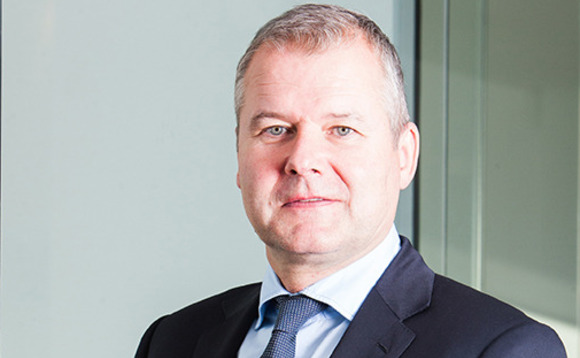
Fees and transparency: according to GPs

This year has seen several high-profile accusations levelled at GPs over the industry’s lack of transparency and fee disclosure. In the first instalment of our in-depth analysis, Mikkel Stern-Peltz speaks to high-profile GPs, including IK Investment Partners' Mads Ruym-Larsen (pictured), to understand their take on reporting, tracking and transparency of private equity fees
Several big-name GPs and LPs have been at the centre of a battle recently over how fees are reported and tracked, and how transparent private equity is when it comes to the true cost of investing in the asset class.
At the end of June, the US Securities and Exchange Commission (SEC) charged KKR with misallocating more than $17m in broken-deal costs to its private equity funds. The firm paid around $30m to settle the charges, including a $10m penalty. The ruling came in the wake of a speech in May by Mark Wyatt, director at the SEC's Office of Compliance Inspections and Examinations, saying room for improvement remained and that the industry could expect further fines on fees and expenses.
In July, a group of 13 US state treasurers and comptrollers wrote to the regulator, calling on it to do more to compel private equity managers into greater reporting transparency for fees and expenses.
The following month, one of the largest European pension funds, the Netherlands' PFZW, said it would not back fund managers that failed to meet certain criteria relating to fee charging and disclosure, as well as transparency.
Meanwhile, over the course of August and September, it transpired that Calpers had failed to track how much it had paid in fees and carried interest in the past quarter of a decade investing in private equity.
The worrying state of affairs at Calpers was underlined at a meeting of the board's investment committee, where key members of Calpers staff responsible for its $30bn private equity exposure seemed unable, or unwilling, to answer when asked basic questions about how the asset class works.
But Annette Wilson, head of investor relations at London-based private equity outfit Silverfleet Capital, says she does not recognise the way GPs are being portrayed in the media coverage of the fees and transparency debate: "We need to put this whole debate into perspective. The view being put forward that it is widespread that GPs are refusing to disclose fees and carried interest information to their LPs certainly is not my experience of what is happening in the industry."
Numbers on demand
Accurately and comprehensively tracking private equity fees can be a substantial and complicated undertaking for LPs. In addition to tracking carry and management fees across dozens of funds, broken-deal fees, transaction costs and board fees add to the complexity of the overall equation. Any confusion is further compounded by fee offsets and the like.
While reporting standards and levels of disclosure may differ from firm to firm, most GPs will say fees are made clear to their LPs and any requests for information will be met in full.
"The questions that can be asked by investors is literally any question and they are extremely detailed in their diligence," says MVision founder and CEO Mounir Guen. He is surprised to hear LPs claiming they have little grasp on what they are paying in fees, which does not resonate with his experience of how the industry operates.
"In the diligence process, LPs check every penny of the general partners," says Guen. "Consultants and the pension plans look at the budgets of the firms, they go person-by-person, they know who's being paid what, they know where the cashflows are, and they look at net cash as a big focus. If there's an odd business that needs to tighten up some of its reporting or some of its financials, that's being done – otherwise you're not in business."
In Guen's experience, firms without ILPA- or EVCA-compliant reporting "are just not going to get the money" from investors. "Can there be improvements? Yes, there probably can be. But it's moving in the right direction and the information is all there," he says.
Most GPs will say all fees and costs that might be allocated across the lifespan of a fund will be explained and set out in the limited partner agreement (LPA) that is agreed on and signed before an investor makes any commitment. Furthermore, any information sought by LPs will be provided by GPs upon request.
While tracking and compiling the fees and costs of private equity allocations may be a complex and tedious task, the onus is also on the LPs to ensure appropriate resources are allocated to the endeavour. When asked how far GPs' responsibility extends in terms of LPs' understanding and tracking of fees, Mads Ryum-Larsen, IK Investment Partners' head of investor relations and partner, says: "The GP has a responsibility to adhere to the agreement that has been made with its LPs."
Ryum-Larsen says IK's terms and conditions are completely transparent, with any and all fees set out in the LPA. "We work on a 100% fee offset basis. Transaction fees are credited to next year's management fee and any broken-deal costs are subtracted from the transaction fees we have levied and that net amount is credited the following year. It's quite simple. We don't charge any exit fees, monitoring fees or the like. If our investors need further information on our fees or any comments on the numbers, then we will provide these."
A similar attitude is shared by Silverfleet's Wilson: "In speaking to my peers on the question of disclosure of fees and carried interest, many GPs are disclosing this information in their investor reports. However, in cases where this is not included in their quarterly reporting, then GPs will provide such information to LPs on request. I have not come across situations where a GP is unwilling to provide an LP with specific information."
Resource-heavy
Ensuring fees are clear and reported, and any questions asked by LPs are answered, is central to enabling costs to be tracked effectively and correctly, but not all investors may have the capabilities to do so.
For smaller investors, who do not have the resources to go through every aspect of the diligence and legal documents associated with fund commitment with a fine-tooth comb, there can be safety in size. Large and savvy institutional investors will use all the resources available to them to make sure every aspect of their commitment and the GP who receives it is on the level. This, to some degree, can be something smaller LPs can lean on.
Ryum-Larsen believes the commitment of large players to a fund provides a degree of safety for smaller investors, in the due diligence that has been carried out on the fund: "If I, as a smaller investor, knew that some of the biggest LPs had already invested in a fund and have had lawyers who work exclusively with private equity to trawl through the agreements, then I would feel comfortable with the integrity and compliance with market terms in the agreement.
"They are gone through with a fine mesh by a number of the major law firms, hired by LPs who have the resources. When we raise a fund, the leading fund lawyers – who we aren't using ourselves – are going through the agreements for the LPs. It's not as if we can be particularly clever and outsmart anyone on this."
LPs should, however, note that the size of fellow investors does not always provide sure-fire cover, as the case of Calpers shows. There will always be a need to commit some resources to tracking. Critics also suggested that part of the issue at the Californian pension fund was that some of the staff dedicated to private equity were more interested in being part of the investment teams, rather than the more routine task of keeping track of fees and costs.
Sjätte AP-Fonden (AP6), a Swedish public pension fund investing exclusively in private equity through funds, co-investing and direct investments, has staff dedicated to tracking costs across its portfolio, as the LP's entire staff can remain focused on the one asset class.
Unlike, AP6, many other pension funds may not dedicate substantial resources to keeping on top of what is being paid to managers. "I assume that if you're a big pension fund in Europe and private equity is only one ticked box on your allocation list, naturally you won't have 20 people working with the asset class," says Ulf Lindqvist, an AP6 spokesperson.
For the Nordic-focused pension fund, however, there is no issue with tracking the outlays for the funds' investment. Says AP6 managing director Karl Swartling: "We have a portfolio of very long-term collaborations with most of the funds with which we're engaged and I have no problem with how we are able to track fees and different types of costs related to our private equity funds."
"I think we get good reporting. We are very demanding in terms of what reporting we should get," says Swartling. "We have quite advanced systems internally, in terms of translating these numbers into our own books and making sure we have full control over what each fund consists of in terms of portfolio companies, costs and carry on each event. In our little Nordic universe, I don't see the problem."
Latest News
Stonehage Fleming raises USD 130m for largest fund to date, eyes 2024 programme
Multi-family office has seen strong appetite, with investor base growing since 2016 to more than 90 family offices, Meiping Yap told Unquote
Permira to take Ergomed private for GBP 703m
Sponsor deploys Permira VIII to ride new wave of take-privates; Blackstone commits GBP 200m in financing for UK-based CRO
Partners Group to release IMs for Civica sale in mid-September
Sponsor acquired the public software group in July 2017 via the same-year vintage Partners Group Global Value 2017
Change of mind: Sponsors take to de-listing their own assets
EQT and Cinven seen as bellweather for funds to reassess options for listed assets trading underwater








